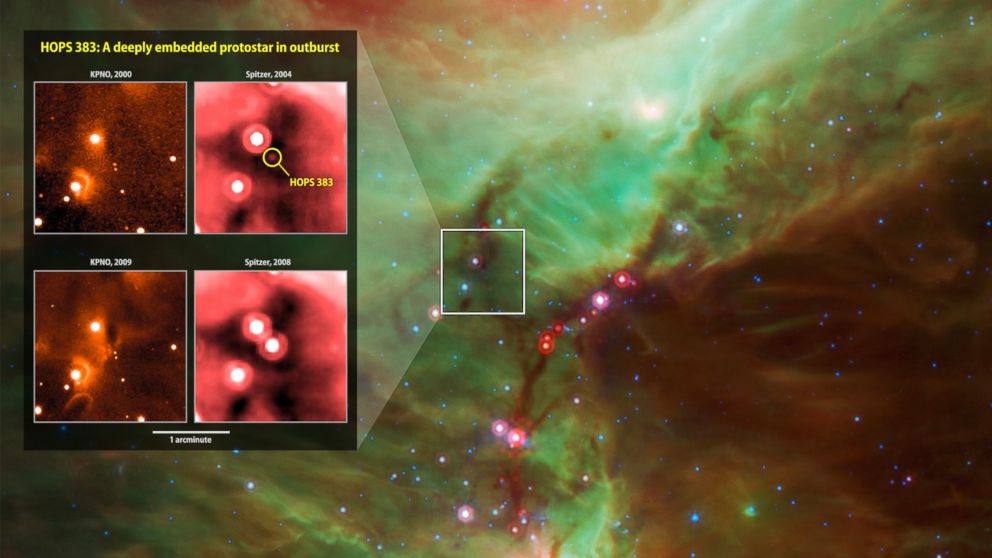NASA Satellites Capture Newborn Star's Growth Spurt
Once virtually invisible, baby star now shines bright on satellite image.

— -- NASA satellites have captured the explosive growth spurt of an embryonic star.
Protostars spend about 150,000 years in their infancy nearly invisible to satellite imagery, but this protostar, named HOPS 383, has lit up for the past few years, according to NASA.
Using data from NASA's Wide-field Infrared Survey Explorer satellite, astronomers were able to observe HOPS 383 as it got 35 times brighter from 2006 to 2008.
The outburst is believed to be the result of the star collecting more dust and gas. It was first observed by astronomer Emily Safron.
It's suspected the prolonged outburst is the result of an accumulation of gas and dust from its surrounding disk. Astronomers believe that the star then developed an extreme hot spot at the point of impact, causing the disk to heat up and making the protostar more detectable from Earth.
HOPS 383 is in the nebula of the constellation Orion about 1,400 light-years from Earth — where plenty of other young stars are still in their birth clouds.




